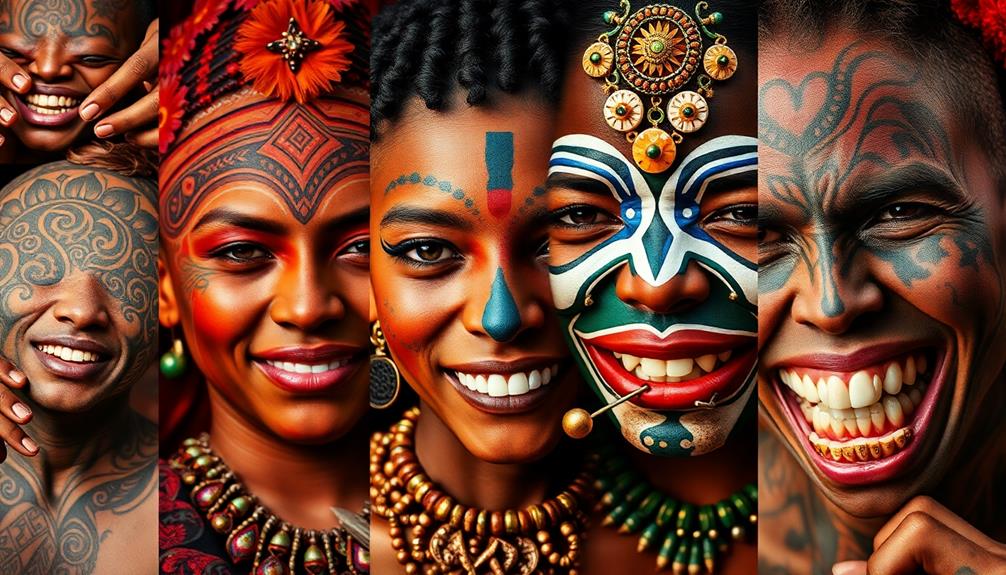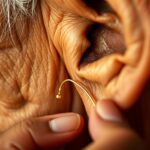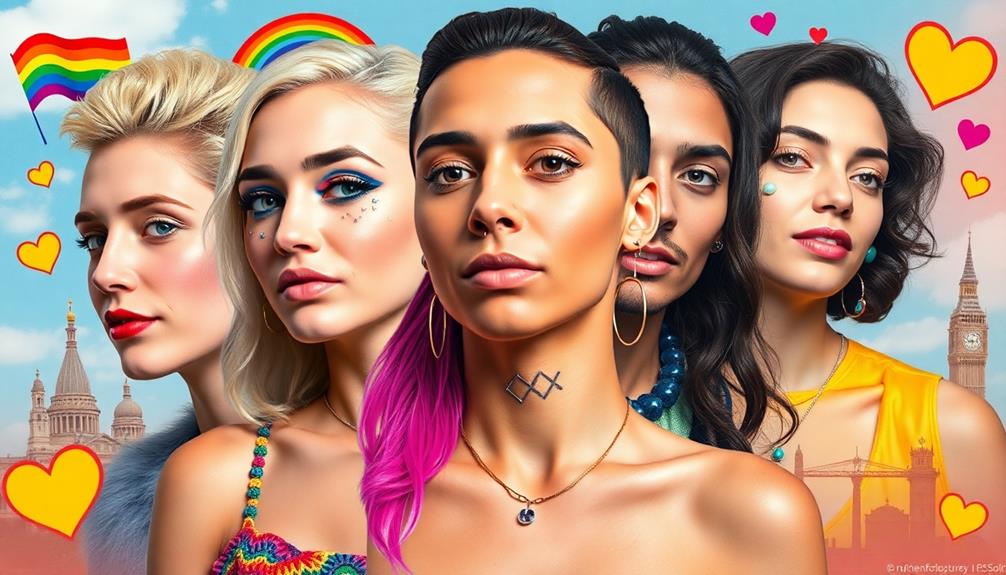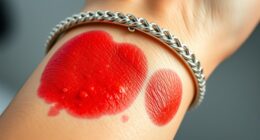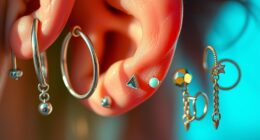Body modification practices around the world showcase the rich tapestry of cultural identity and values. From ancient Mayans drilling teeth for inlays to the neck elongation rituals in Thailand, each method symbolizes beauty, status, or rites of passage. Tattoos and piercings have evolved into forms of personal expression in modern society, while historical practices like corseting reveal past societal pressures. However, these modifications come with health risks and psychological implications that need consideration. As you explore further, you'll uncover the fascinating stories behind these traditions and the motivations driving individuals to alter their bodies.
Key Takeaways
- Body modification practices, such as tattooing and piercing, date back to ancient civilizations and reflect cultural identity and social status.
- Traditional customs like neck elongation in Thailand and dental filing in Indonesia symbolize beauty ideals and societal values within respective cultures.
- Psychological motivations for body modifications include self-expression, identity marking, and coping mechanisms for trauma, influencing individuals' choices.
- Health risks associated with body modifications, such as infections and irreversible damage, necessitate informed decision-making and proper aftercare.
- Contemporary trends in body modification, including cosmetic surgery and radical modifications, have gained mainstream acceptance, influenced by social media and evolving beauty standards.
Historical Context of Body Modification
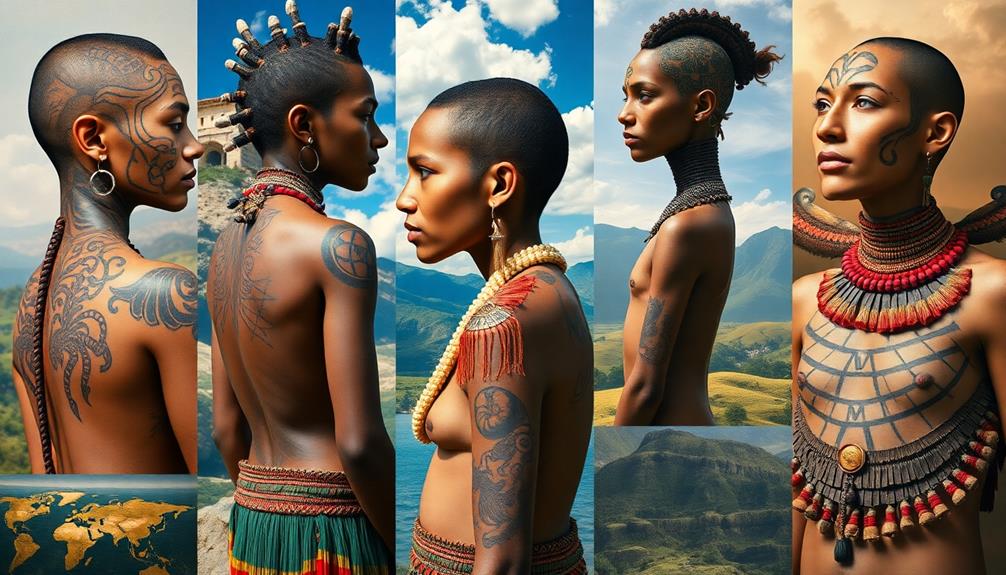
Body modification practices have deep roots in human history, reflecting cultural values and societal pressures throughout the ages. You might find it fascinating that practices like corseting, which began as early as 1600 BC, gained significant popularity in the 16th century among women in Western culture. These corsets aimed to achieve an idealized body shape but often led to severe health issues, highlighting the lengths people would go to meet beauty standards.
In other regions, unique practices emerged. For example, in Indonesia, dental filing is a traditional modification aimed at enhancing beauty and warding off evil spirits. The ancient Mayans took it a step further with their dental modifications, drilling teeth and filling them with semi-precious stones like jade, which symbolized social status.
Neck elongation, a practice you might associate with certain communities in Thailand, dates back to the 11th century. Using brass coils, individuals altered their necks as a sign of beauty and wealth.
These historical contexts of body piercing and neck elongation show how deeply intertwined body modification is with cultural identity and societal expectations.
Global Body Modification Practices
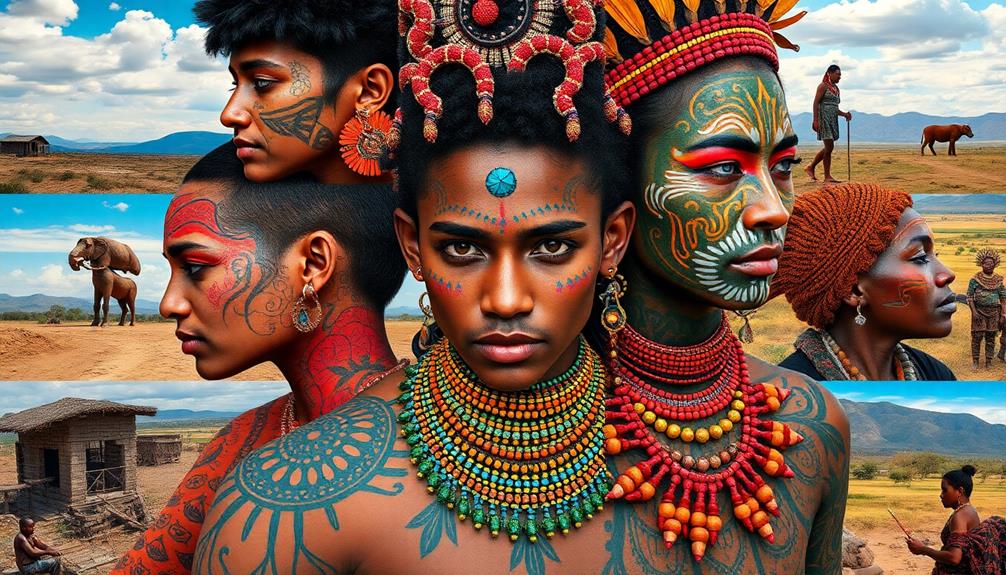
When you explore global body modification practices, you'll notice that these traditions carry deep cultural significance and reflect historical evolution.
From dental inlays in the Mayan civilization to neck elongation in Thailand, each practice tells a unique story about beauty and identity.
As you consider contemporary trends like tattooing and piercing, think about how these forms of self-expression connect back to ancient customs.
Cultural Significance of Modifications
Exploring cultural significance in body modification reveals how these practices reflect identity and societal values across the globe.
You'll find that different types of body modifications serve as powerful indicators of cultural identity and social status. For instance, dental filing in Indonesia and neck elongation in Thailand highlight local beauty ideals and traditions. In many cultures, such as the Mayans who used dental inlays, modifications signify not just aesthetic preferences but also spiritual beliefs and community membership.
Scarification, an artistic form of body modification, is prevalent in various tribes, embodying rituals and rites of passage, showcasing deep cultural significance.
Historical practices like foot binding in China and corseting in Victorian England illustrate the societal pressures women faced to conform to specific beauty standards, often at the expense of their health.
Today, the rise of tattooing and piercing reflects a shift towards personal expression and individuality, challenging traditional views on beauty and modification.
Historical Evolution of Practices
Throughout history, body modification practices have evolved considerably, influenced by cultural, social, and technological changes. You'll find evidence of these practices dating back thousands of years, like the tattoos discovered on Otzi the Iceman, who lived around 3300 B.C.
Corsetry emerged in the 16th century, reflecting beauty standards and social pressures, often leading to health issues among women due to tight lacing.
In Mesoamerica, the Mayans showcased their cultural identity through dental inlays, drilling teeth to insert semi-precious stones, which held aesthetic and ritual significance.
Similarly, the Kayan tribe in Thailand practiced neck elongation with brass coils dating back to the 11th century, signifying beauty and wealth within their society.
Furthermore, historical practices such as foot binding in China and female genital mutilation in various cultures illustrate how body modifications often intertwine with cultural identity, rites of passage, and societal norms.
These examples highlight how the evolution of body modification has been shaped by the values and beliefs of different societies, reflecting a complex interplay between individual expression and cultural heritage.
Cultural Significance of Modifications
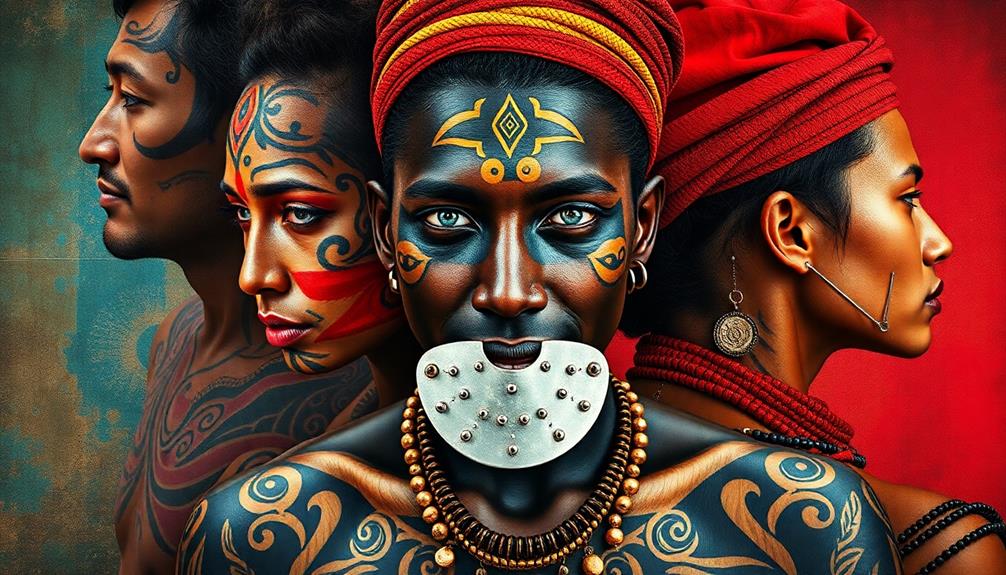
When you explore body modifications, you'll notice their deep historical roots and the powerful symbolism they carry.
Each practice, whether it's foot binding or neck elongation, reflects unique cultural identities and societal values.
Understanding these modifications helps you appreciate how beauty standards and personal identity intertwine across different cultures.
Historical Contexts of Modifications
Body modification practices have deep historical roots, reflecting cultural significance across various societies. For over 10,000 years, humans have engaged in body modification, with the oldest known tattoo discovered on Otzi the Iceman, dating back to 3300 B.C. This shows how long people have valued modifying their bodies.
In the 16th century, corsets became popular, reshaping women's bodies into desired silhouettes, often at the expense of their health.
In Bali, dental filing serves a dual purpose: it enhances beauty and protects against evil spirits, indicating how body modification practices can be intertwined with local traditions. The ancient Mayans took body modification a step further by using semi-precious stones for dental inlays, reflecting both aesthetic and spiritual values.
A striking example is the Kayan tribe in Thailand, where neck elongation through brass coils has been practiced since the 11th century. This modification symbolizes beauty and wealth, highlighting the deep cultural significance of altering the body.
Each practice tells a story about the values and beliefs of a community, showcasing the rich tapestry of human expression through body modification.
Symbolism and Identity
Exploring the cultural significance of body modifications reveals how deeply intertwined they are with identity formation and societal values. From piercings to scarification, these practices reflect ideals of beauty and social status across various cultures.
Consider the following table that highlights different body modifications and their symbolic meanings:
| Body Modification | Cultural Significance |
|---|---|
| Tooth Filing | Reflects beauty standards and social status in Indonesia |
| Neck Elongation | Signifies wealth and beauty among certain Thai groups |
| Scarification | Marks the shift into adulthood in African tribes |
In Japan, the deliberate misalignment of teeth (Yaeba) embodies youthfulness, showing how cultural perceptions shape personal identity. Similarly, corseting in the West historically represented femininity and class, intertwining body modification with cultural narratives.
These practices reveal not just aesthetic choices but also serve as powerful markers of belonging and identity within communities, illustrating how deeply beauty standards are rooted in cultural contexts. Each modification you encounter tells a story, connecting you to a rich tapestry of social values and individual expressions.
Psychological Motivations Behind Modifications

Tattoos and piercings often act as powerful tools for self-expression and identity, allowing individuals to mark significant life events or personal struggles on their skin. For many, body modification serves as a way to enhance self-esteem and reclaim ownership over their bodies. When you choose to get a tattoo or piercing, it can lead to improved body image and increased confidence, fostering a sense of empowerment.
However, the psychological motivations behind these modifications can be complex. Some people turn to body art as a coping mechanism for trauma, finding emotional relief and healing through the act of modification. Conversely, negative motivations, like low self-esteem and societal pressures, might push individuals toward alterations, sometimes resulting in regret or dissatisfaction with their appearance.
Additionally, the phenomenon of "tanorexia" illustrates how body modification practices can stem from underlying mental health issues, such as Body Dysmorphic Disorder (BDD). Recognizing these psychological factors is vital, as they not only shape your decisions around body modification but also influence your overall well-being and self-perception.
Understanding these motivations can guide you in making more informed choices about your body.
Health Risks of Body Alterations

Many individuals overlook the potential health risks associated with body modifications, often focusing solely on the aesthetic appeal. However, it's essential to understand that various practices can lead to serious complications.
For instance, tattoos and piercings can result in infections if you don't follow proper hygiene and aftercare. Studies show around 20% of tattooed individuals face complications.
Excessive tanning, whether from the sun or tanning beds, poses significant health risks as well. The American Academy of Dermatology highlights that tanning can increase your risk of melanoma by 75%.
Furthermore, practices like scarification and branding can cause severe scarring and chronic pain, especially when done by untrained individuals.
Dental modifications, such as tooth filing, can also lead to irreversible damage, including tooth decay and gum disease.
In addition, body modifications involving subdermal implants and extensive piercings carry risks of migration, rejection, and allergic reactions to materials used.
To minimize these health risks, it's vital to seek professional expertise and prioritize safety during your body modification journey. Always consider the potential implications before proceeding with any alterations to your body.
Evolving Trends in Body Modification
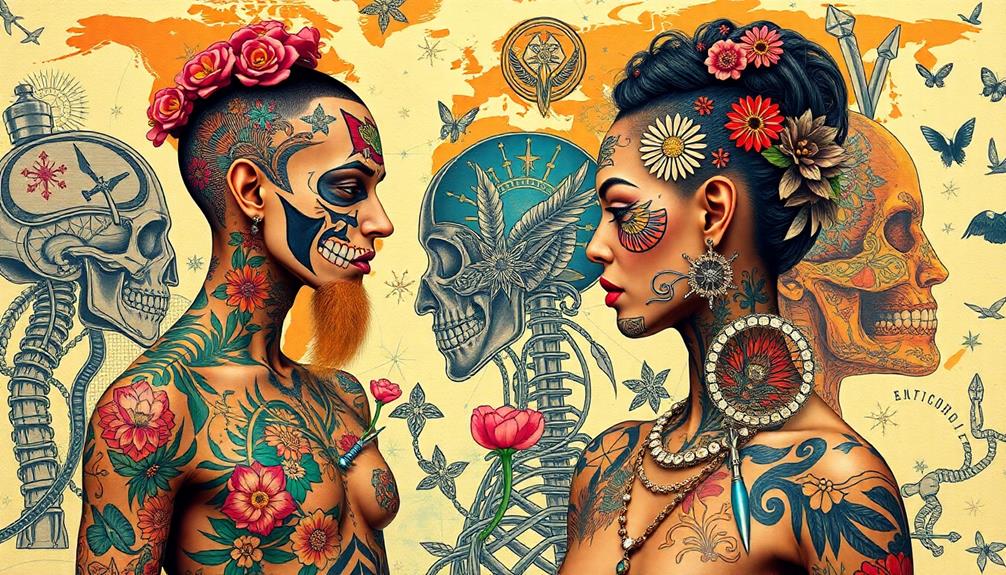
In recent years, body modification practices have evolved markedly, reflecting changing societal norms and personal expressions of identity. The surge in body piercing popularity is a prime example, with about 60% of women and 42% of men in the U.S. having at least one piercing. This shift showcases a move toward mainstream acceptance, allowing you to express individuality more freely.
Tattoos are also becoming widely accepted, with roughly 10% of Americans sporting ink, often viewed as an essential part of personal expression. Alongside these trends, cosmetic surgery procedures have skyrocketed, with over 10.2 million performed in 2008 alone, indicating a desire to conform to new beauty standards.
The tanning industry has adapted to these changing ideals, growing into a $5 billion market as people seek that coveted glow. Additionally, radical modifications, like tongue splitting and subdermal implants, are pushing the boundaries of traditional practices.
Even brass coils, an ancient form of body adornment, are finding their place in contemporary trends, showcasing a blend of history and modern expression. These evolving practices highlight a society increasingly open to diverse forms of body modification.
Body Modification in Contemporary Society
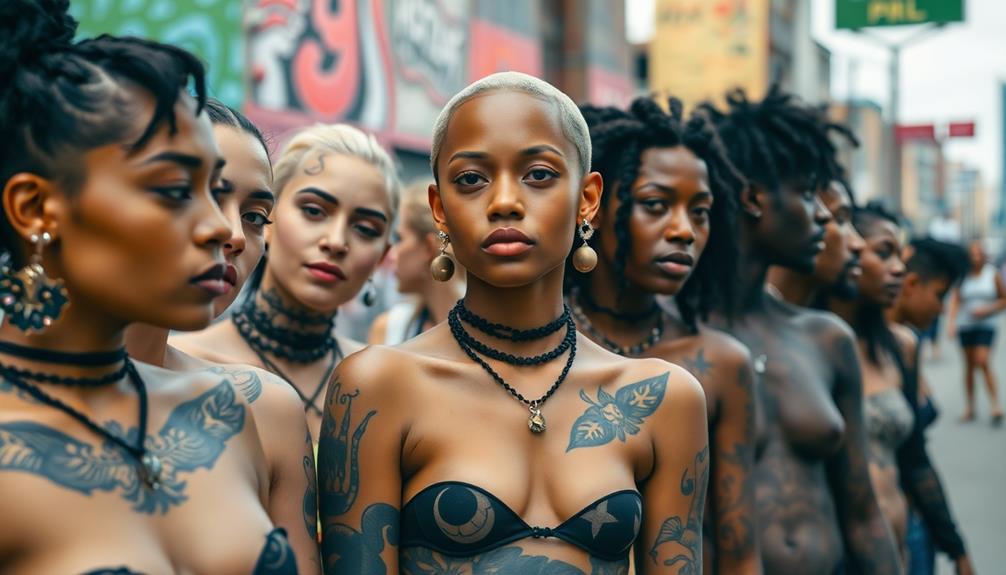
Today, body modification is woven into the fabric of contemporary society, reshaping how individuals express themselves. You might notice that body modification practices like tattooing and piercing have become increasingly mainstream. Recent surveys reveal that around 60% of women and 42% of men in the U.S. have at least one body piercing.
Tattoos, often seen as personal expressions of identity and creativity, are now embraced by about 10% of Americans.
Moreover, the popularity of cosmetic procedures has skyrocketed. In 2008 alone, over 10.2 million cosmetic procedures were performed in the U.S., generating nearly $12 billion in revenue. This trend highlights a growing desire for aesthetic enhancement through body modification.
As societal attitudes shift, acceptance of diverse body modification practices—such as ear stretching and scarification—continues to rise. Social media and popular culture amplify this visibility, sparking conversations about the implications of these choices.
You might find that the increasing normalization of body modifications encourages you to explore your own self-expression, while also being aware of the surrounding health and societal conversations.
Ethical Considerations and Autonomy

Ethical considerations surrounding body modification practices raise important questions about individual autonomy and cultural influences. When you consider body modifications, you must weigh your personal choices against societal or cultural pressures. Informed consent is essential; you need to fully understand the risks and implications of any procedure to truly exercise your autonomy.
As global awareness of human rights grows, practices like female genital mutilation are increasingly scrutinized. Many view these traditions as violations of bodily autonomy, leading to heated debates about the ethics of such modifications. Medical professionals face ethical dilemmas, ensuring that you make informed decisions free from psychological or societal pressures.
Advocacy groups emphasize the importance of respecting individual choice while highlighting harmful cultural practices that infringe on personal autonomy. They advocate for the necessity of informed consent, aiming to protect individuals from coercion, whether overt or subtle.
Ultimately, understanding the balance between respecting cultural traditions and safeguarding personal rights is essential. Your autonomy matters, and maneuvering through these ethical considerations can empower you to make choices that align with your values and beliefs.
Frequently Asked Questions
What Cultures Practice Body Modification?
You'll find various cultures practicing body modification, such as the Kayan tribe's neck elongation, Indonesia's dental filing, and China's historical foot binding. Each reflects unique beauty standards, social status, and deeply rooted traditions.
Who Has the Most Body Modifications in the World?
Did you know Axel Rosales has over 1,200 body modifications? He holds the title for the most modifications in the world, showcasing an incredible dedication to body art that truly stands out in today's culture.
What Are the Body Modifications in the United States?
In the United States, you'll find popular body modifications like tattoos, piercings, and cosmetic surgeries. Many people express themselves through these practices, reflecting personal identity and societal trends in beauty and self-expression.
What Was the Body Modification in Ancient China?
Imagine you're living in ancient China, where beauty's defined by three-inch feet. You'd endure painful foot binding, trading mobility for status, as society's narrow ideal confines you, transforming your feet into a symbol of exquisite oppression.
Conclusion
As you explore the world of body modification, you might wonder if these practices are merely trends or deeply rooted cultural expressions. The truth is, they intertwine personal identity and societal norms, reflecting a complex relationship with self-image and community. As you consider the myriad motivations behind these modifications, you may find yourself questioning what truly drives individuals to alter their bodies. Ultimately, it's a fascinating journey into the heart of human expression and the quest for autonomy.
Hi, my name is Danielle, and I’m an author for piercings-body.com. I have a passion for writing and love to share my knowledge on all things body piercing-related. I’m also a huge advocate for safe body modification practices and believe everyone should be able to make informed decisions about their bodies. When I’m not writing or blogging, I enjoy spending time with my family and friends, practicing yoga, and exploring new places.

